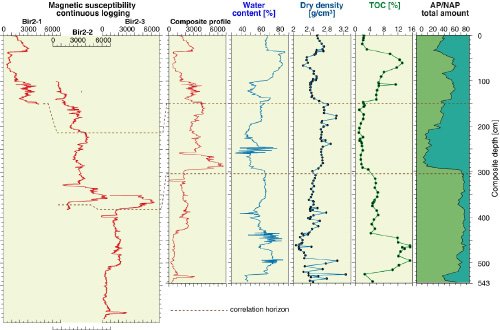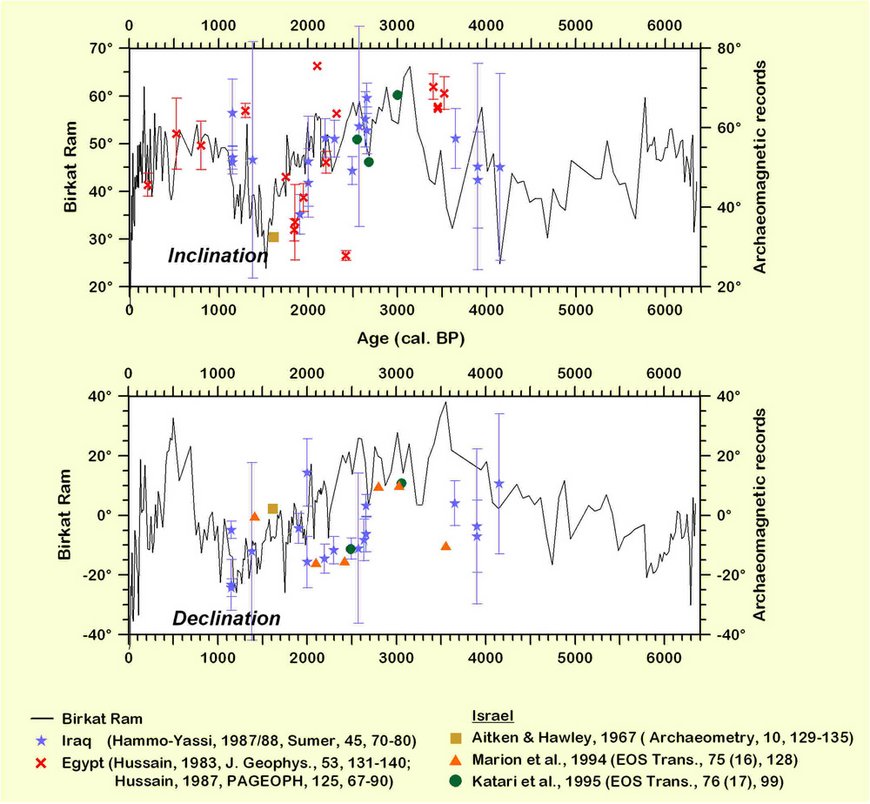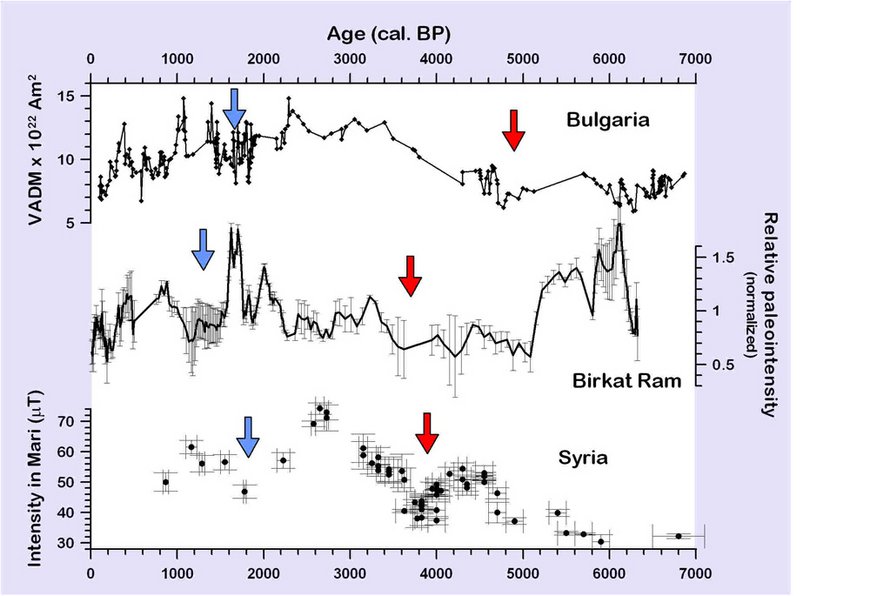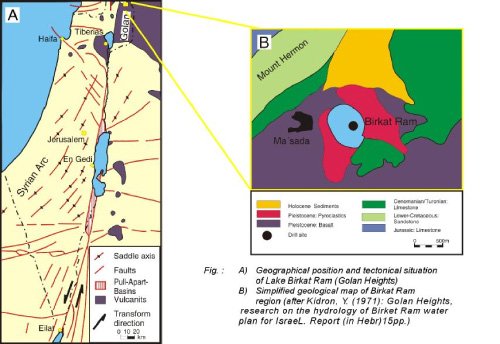Holocene Climate and settlement history in the Near East (Golan Heights)
The region between the Dead Sea and Mt. Hermon (Golan Heights), including the Jordan river catchment area, is an excellent location for the analysis of climate, vegetation, sedimentology and settlement history in the Near East. Several plant-geographical territories such as the mediterranean, the irano-turanian and the saharo-sindian vegetation have their meeting point in this region due to the steep precipitation gradient. Furthermore, the region is part of the so-called Fertile Crescent, where the origins of agriculture and the human impact extend back about 11,000 years ago.
Backer:GFZ, KIHZ, DFG
In 1999 we raised three short sediment cores from Lake Birkat Ram located about 940m asl. near the Mt. Hermon (2025 m asl.).
Lake Birkat Ram is an excellent archive for paleo-environmental and climatic investigations as well as the human history. The lake water is fresh and receives most of its water from precipitation, surface run-off and is secondarily nourished by subaquatic springs.
Based on sedimentological analysis, pollen analysis and high-resolution logs on magnetic susceptibility, composite records of paleo- and rock magnetism and vegetational changes for the last 6000 years were constructed.
The results show intense land use in the Chalcolithic, the Early Bronze Age and the Hellenistic-Roman-Byzantine Period, whereas during the Middle and Late Bronze Age, the Iron Age as well as the Arab-Osman Period the area of cultivation decreased and forest regeneration followed as a consequence of nomadism.
Our first results are:
- Birkat Ram is a excellent archive for further paleo-environmental and climatic investigations
- The sedimentological based correlation of the core segments can be certified by palynological results.
- The pollen diagram shows the detailed vegetation history of the Birkat Ram area from the Chalcolithic to the 20th century
- The Holocene vegetation development depends mainly on human impact
Our further scientific questions are:
- Can the influence of the human activity, for example known mining during the hellenistic to byzantine times , be detectet by geochemical and grain size analysis?
- Is there any relationship between the responses of natural ecosystems to climate change and the development of human societies?
- Are there possibilities to make better the chronology (e.g. 230 U/ 234 Th age determination)
Detailed paleo- and rock magnetic investigations were carried out on the sediment cores from Birkat Ram, Golan Heights (Israel) in order to reconstruct the variations of the Earth magnetic field, directions and intensity. The characteristic remanent magnetisation (ChRM) was determined by analysis of the results of progressive alternating field (AF)-demagnetisation. The brown to olive coloured homogenous sediments show a fairly stable magnetisation and Ti-magnetite originating from the volcanic rocks in the catchment area was identified as main magnetic carrier mineral. The ChRM-inclination and -declination records agree with the archaeomagnetic results from Iraq, Egypt and Israel. But a well documented inclination features known from Europe with an age of 600 years BP is not present, indicating a different behaviour of the paleomagnetic field in adjacent regions for a limited time interval.
The relative paleointensity as estimated by normalizing the intensity of the natural remanent magnetization (NRM) after demagnetization at 20 mT (JNRM(20mT)) by different concentration parameters is hampered by grain size variations. The median destructive field of the NRM (MDFNRM) is coherent with the relative paleointensity estimates, indicating that a sedimentary effect has not sufficiently been removed by the normalization process. The morphologies of these estimates however correspond to the archaeomagnetic records from Bulgaria and Greece. Therefore a second normalization, based on the linear relationship between the paleointensity estimates and the MDFNRM was applied, resulting in an improvement of the records.







